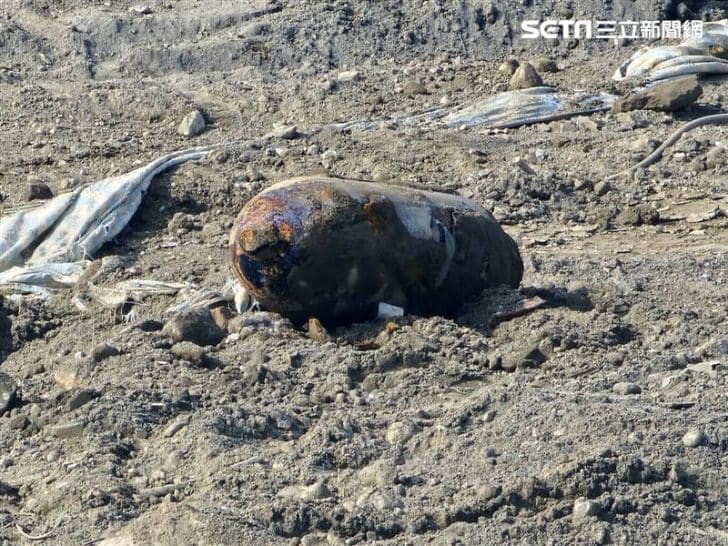The construction of TSMC’s new semiconductor factories in Kaohsiung has been disrupted once again by an unexpected and concerning discovery: an unexploded World War II bomb. This is the third time in less than a year that workers have found explosive devices in the area, which was targeted by U.S. bombing during the conflict while under Japanese control.
The discovery was made at 11:30 a.m., local time, when a team of workers detected a large metal object buried on the grounds of the former refinery where the most advanced facilities of the Taiwanese company are now being built. After confirming it was a corroded aerial bomb, military authorities were alerted, and within an hour, a specialized team arrived to safely remove it.
A Strategic Hub for the Global Industry
The find took place in the area where TSMC is constructing five state-of-the-art chip manufacturing plants. This Kaohsiung complex is central to the company’s strategy, as it will produce 2-nanometer semiconductors and even more advanced technologies, such as 1.4A chips.
The first factory, known as P1, already has equipment installed and is expected to begin mass production later this year. Two others, P2 and P3, are also planned for 2nm node fabrication, while plants P4 and P5 could be earmarked for even more cutting-edge technologies. The size of this complex positions Kaohsiung as one of the pillars of the future of global microelectronics.
A War Heritage Beneath the Surface
The site where these factories are being built was once an oil refinery that, during World War II, was bombed by U.S. aircraft to weaken Japan’s military energy resources.
This wartime legacy continues to surface almost 80 years later. In August and November 2024, two aerial bombs were previously found on the same site: one weighing 1,000 pounds (around 450 kg) and another of 500 pounds (225 kg). As with this latest find, both artifacts were heavily corroded, preventing precise identification of their origin or manufacturing batch.
Taiwanese military officials confirmed that the device removed this week posed no immediate danger to workers, though the mere presence of unexploded ordnance requires work stoppages and strict safety protocols. The bomb has been moved to a military depot where it will be destroyed according to established procedures.
Safety and Project Continuity
From TSMC, the message has been consistent across all three incidents: ensure worker safety and resume construction as soon as possible. Although the company hasn’t provided detailed comments on the latest discovery, local sources indicate the site was only halted for a few hours.
The Taiwanese Defense Ministry maintains bomb disposal teams deployed across different regions to respond to incidents like this, common in industrial and port areas that faced attacks during the war. The repeated discoveries in Kaohsiung suggest more artifacts may be uncovered as construction progresses.
A Paradox: War Past, Technological Future
The striking aspect of this situation is the historical paradox: the remnants of a 20th-century global conflict coexist on the same site as infrastructure designed to support the technology-driven warfare of the 21st century.
TSMC, the world’s leading maker of advanced chips, plays a central role in current geopolitical competition. Its semiconductors power everything from smartphones to supercomputers and AI systems. The U.S., Europe, and Japan have implemented policies to secure access to its production, while China seeks to reduce reliance.
The emergence of 2nm factories — considered the core of the next digital decade — atop remnants of a bombing campaign illustrates the continuity between the past and the present: technology and geopolitics remain two sides of the same coin.
What’s Next
Experts believe that the discovery of bombs will not delay the scheduled timeline. TSMC is still targeting to start 2nm production by the end of 2025, with Kaohsiung serving as a strategic complement to the Hsinchu and Tainan plants.
The immediate priority is to strengthen underground inspections with advanced detection equipment to reduce the risk of further disruptions. While each find serves as an uncomfortable reminder of history, they also highlight the resilience of an industry that has made Taiwan the epicenter of global technological innovation.
FAQs
1. Why are World War II bombs appearing in Taiwan?
During the conflict, when Taiwan was under Japanese control, industrial facilities like refineries and ports were targeted by U.S. bombings. Many of these devices did not detonate and have remained buried for decades.
2. What risks do these bombs pose to TSMC’s construction?
In practice, corroded bombs are usually inert and are removed safely. However, each discovery causes temporary work stoppages, safety protocol implementation, and coordination with the military, which can slow down progress.
3. How important are the Kaohsiung factories for TSMC?
They are critical for producing 2nm chips and even more advanced generations. The five-plant complex is among the company’s most ambitious projects and reinforces Taiwan’s position in the global semiconductor market.
4. Is it likely more bombs will be found in the area?
Yes. Since the land was part of a bombed refinery, experts believe more artifacts may be uncovered as excavations and earth-moving activities continue.
Image via Taiwannews

